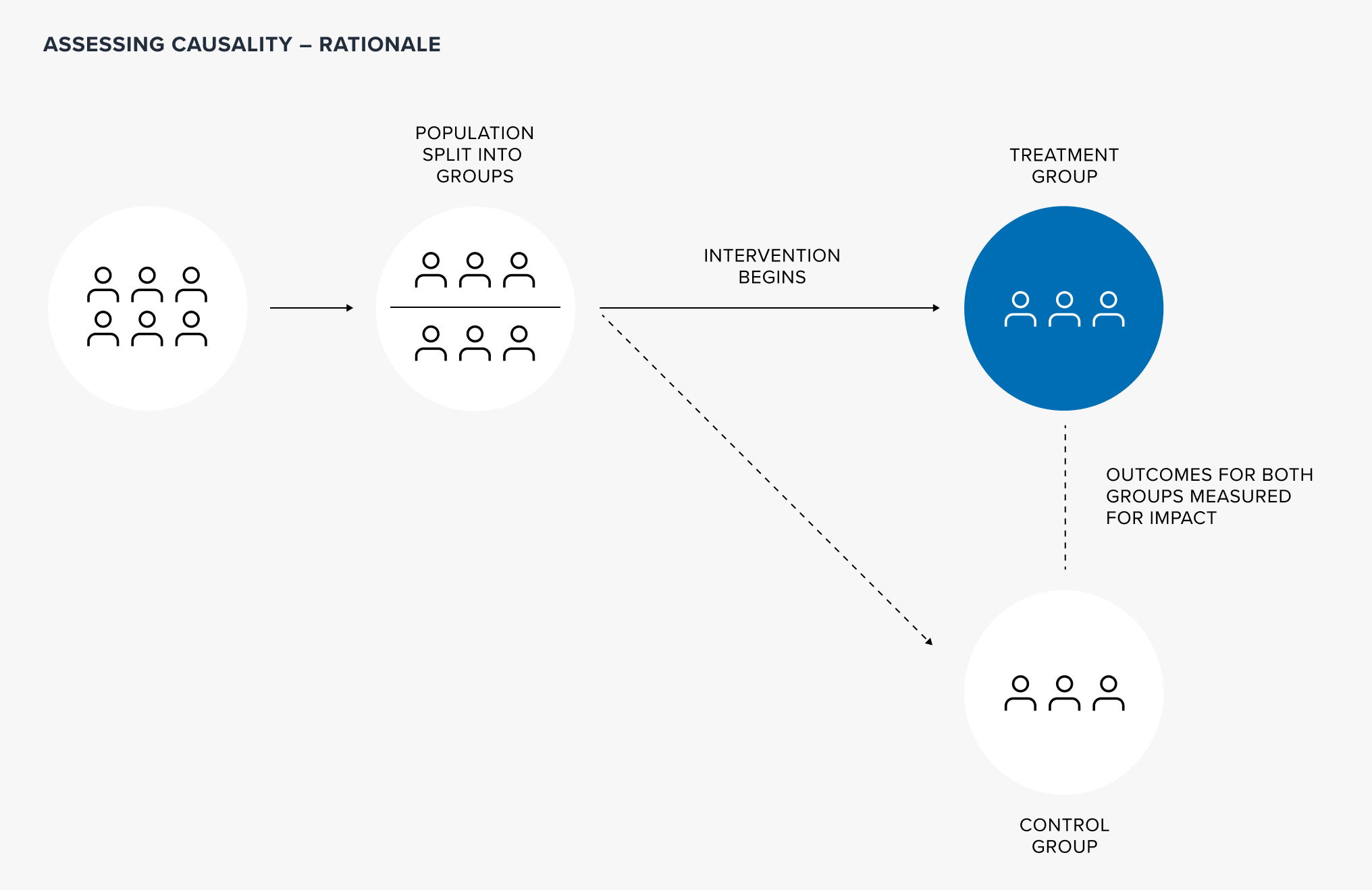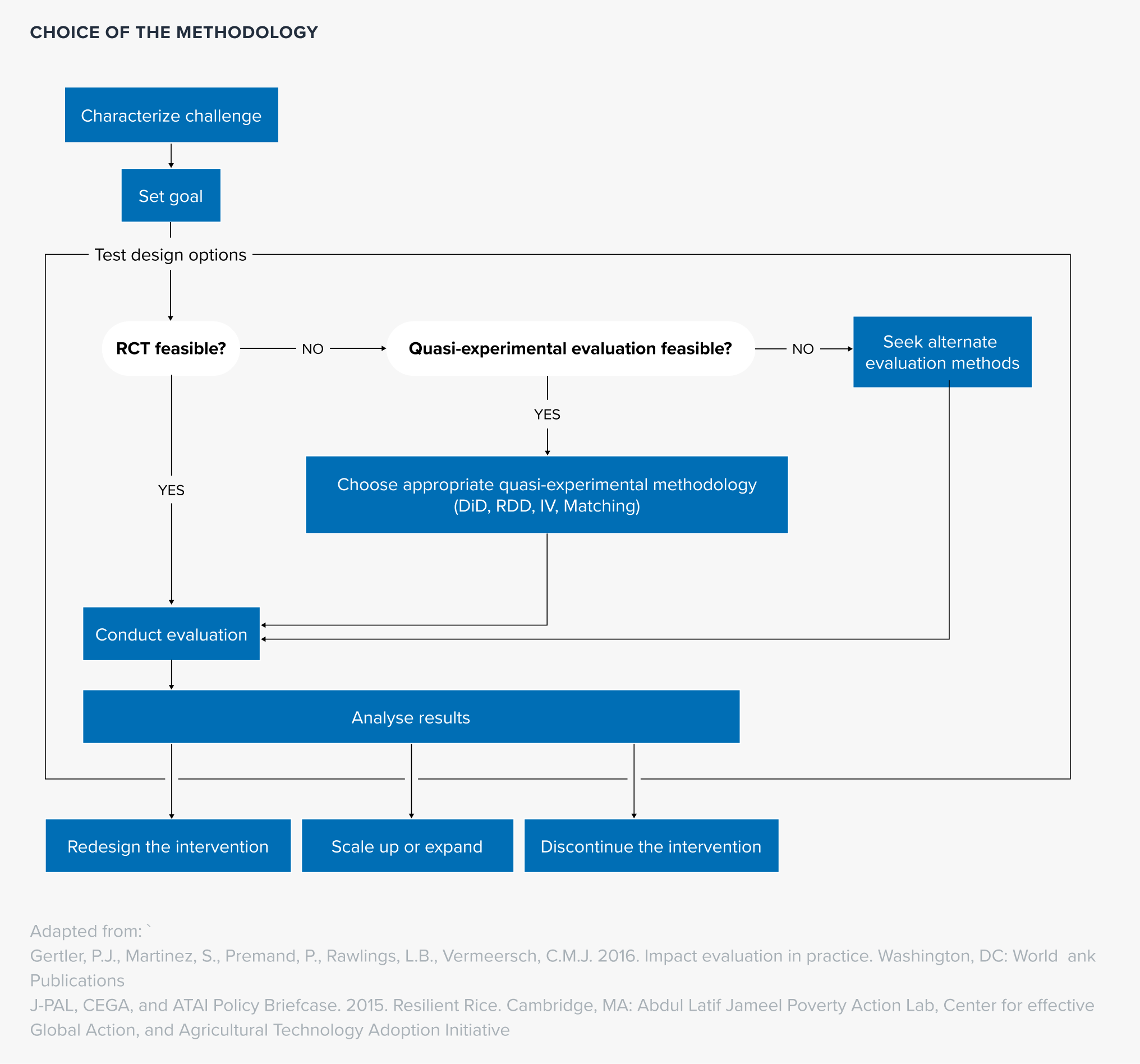Using rigorous and innovative methods to measure impact
Published on 06 April 2023
Note: this page is a part of Enhancing evidence-informed interventions page
UNDP makes use of different scientific methods to measure impact. Experimental and quasi-experimental are the most prominent designs, relying on control and treatment groups. The control group (e.g. benchmark, not exposed to the intervention) acts as a counterfactual¹, which allows for a valid comparison of similar groups at the same point in time. This approach enables attribution of impact to the intervention being tested and ensures that confounding factors, such as age, gender and educational level of beneficiaries, are not responsible for the result.
In an experimental design, the selection of control and treatment groups is random² and integrated at the inception of an intervention. When this random selection is not possible, programme managers and policymakers can turn to quasi-experimental methods – such as regression discontinuity design, instrumental variables, difference-in-difference and matching.
To backstop these designs, the availability of quality, accurate and frequent data is critical. While new technologies (such as remote-sensing and web scraping) coupled with increased computing power create new opportunities for gathering and analysing data, traditional household surveys and administrative data still play a crucial role in measuring policy and intervention outcomes.
Beyond the co-production of scientific knowledge - that strengthens country engagement and local capacities -, results from causal assessments can be incorporated in programming, enabling programme managers and policymakers to plan interventions in a rational and evidence-based manner.


References
[1] A counterfactual is what would have happened had a given intervention not been undertaken
[2] Specifically, randomization means that anyone of an equivalent group could have been allocated to control or treatment. This allows for valid statistical inference on the causal effect of a given intervention.

